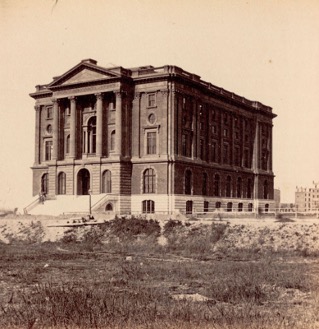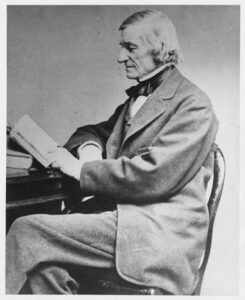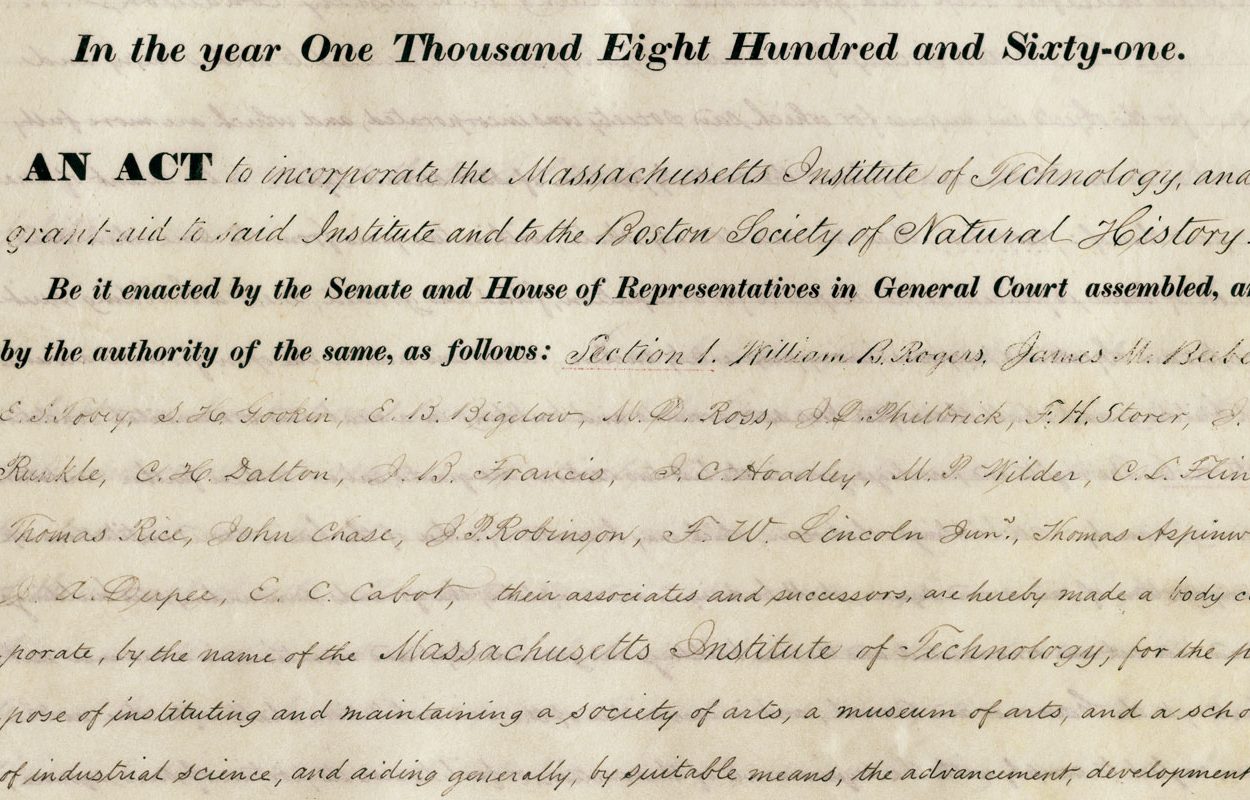
The original Institute campus in the newly developed Back Bay area of Boston (ca. 1864). This building was later named for William Barton Rogers. In 1916 MIT relocated to Cambridge. Courtesy of the Boston Public Library.
MIT and Slavery: An introduction
Colleges and universities across the Americas and Europe are researching their historical ties to the Atlantic slave trade and slavery. In 2017 MIT president L. Rafael Reif initiated a project to research and publish any historical connections between American slavery and the development of the Massachusetts Institute of Technology. Students in the “MIT and Slavery” course are documenting how slavery contributed to the career of William Barton Rogers (the founder of MIT), how it influenced the establishment and early success of the Institute, and how it shaped science and engineering in the Civil War era.

William Barton Rogers, the founder and first president of MIT. Distinctive Collections, MIT Libraries.
The timing and site of MIT’s founding differs from most of the colleges and universities that are now investigating their links to Atlantic slavery. Chartered in 1861, just two days before the beginning of the Civil War, MIT did not offer classes until 1865 as the war was ending. The Institute was chartered in Massachusetts, where slavery had been abolished decades earlier, and it was originally located in Boston, a city with an active abolitionist minority. Nonetheless, American slavery shaped the early history of MIT in ways that reveal and highlight the centrality of enslaved people’s lives and labor to the region and the nation.
Next: How is the founding of MIT connected to slavery?
